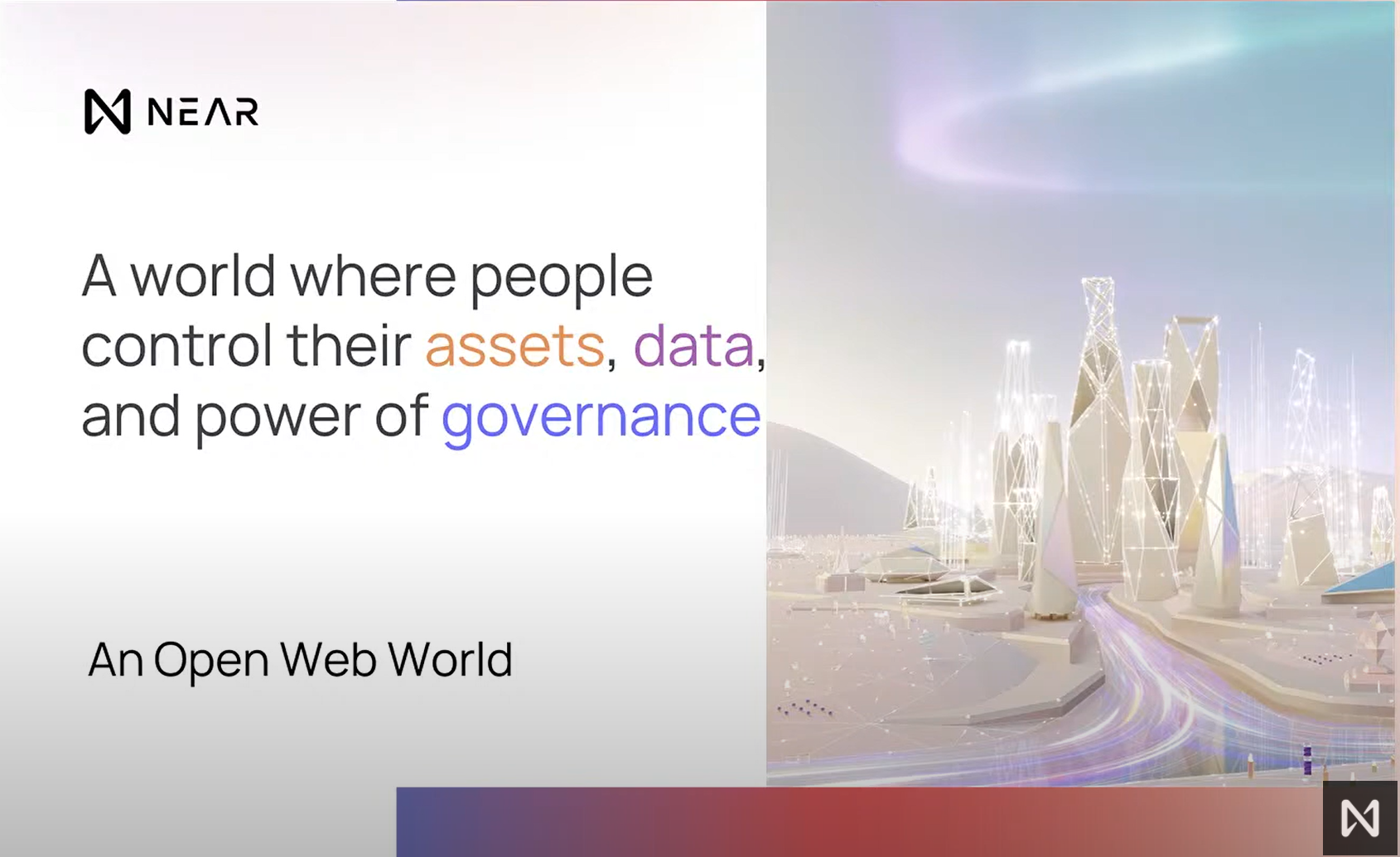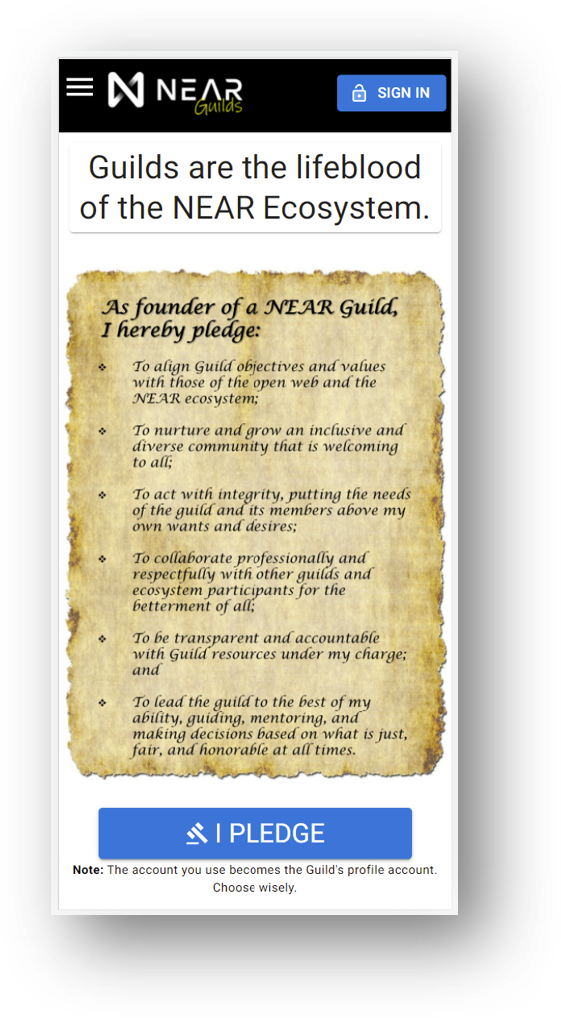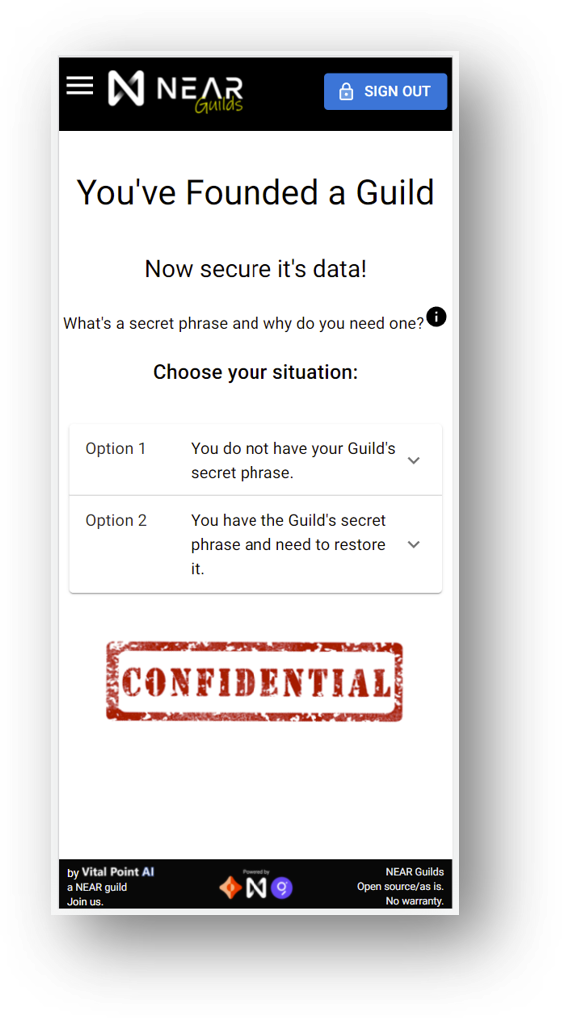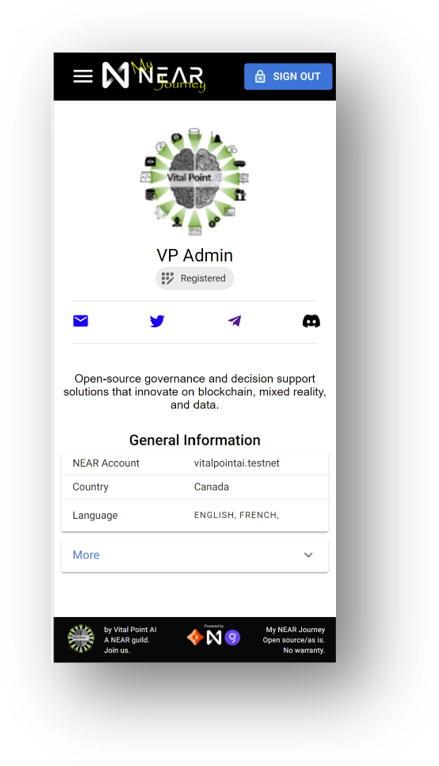Onboarding is a Catalyst in the Journey to a Billion Users
The founders of NEAR Protocol designed it from the bottom-up with a focus on usability both from an end-user and developer perspective. That focus, combined with super low gas fees, ~1s block finality, and infinite scalability via sharding make it feasible to develop applications on NEAR that have widespread appeal.
The probability that those kinds of apps will emerge with more and more frequency based simply on developer experience alone is already high, but to top it off, NEAR committed over $800 million to their ecosystem development fund and embarked on a goal to create 1000 teachers to help ensure those apps get built. That means that NEAR's goal of a billion users in the next five years realistic and achievable.
That said, someone new to web 3, crypto and NEAR still has a giant cognitive leap to make. They must figure out how to create an account, figure out how to use that account, and then figure out what they can use that account for.
Attrition can/does happen at any one of those steps.
The other factor to consider when aiming for a billion users is retention. There is a massive difference between a billion unique people using NEAR and a billion inactive accounts sitting dormant on the protocol. If the goal is a billion accounts - then NEAR can just spend the next five years making them - they'll get there eventually. Pretty sure that's not the point though.
With respect to retention, we shouldn't overlook the role that community and the effectiveness of web 2 social features, some of which are starting to emerge in web 3. Getting to a billion active users will mean leveraging communities and ensuring there is an engagement plan People might be attracted to NEAR Protocol by the tech or a project, but it's often the community that keeps them engaged and around.
Thus, getting to a billion means ushering people into an area where they feel as though they belong and then keeping them through positive opportunities for engagement. Maximizing both intake and retention is the quickest way to a billion and one component of that is a great onboarding plan.
Contributing to NEAR Onboarding and Engagement
Earlier this month, in discussing an initiative to build an on chain guilds platform for NEAR guilds, it became clear that there are onboarding challenges not only for guild leaders looking to start guilds, but also for individuals at any one of several entry points into the NEAR ecosystem. We want to help NEAR get to those billion users, so Vital Point AI has launched development on a NEAR onboarding initiative to help ease the transition from newbie to a contributing and engaged member of the ecosystem.
The end-state of this project sets the conditions for applications and front ends to be built for a variety of custom branded onboarding scenarios and we'll showcase how they might work with:
- a NEAR branded onboarding app for individuals;
- a NEAR branded onboarding and management platform for guilds; and
- a custom branded onboarding app as a proof of concept for a specific NEAR guild called the Open Web Sandbox (OWS)
We believe the way we approach these apps is important. We shouldn't be building another web 2 user experience, but at the same time we shouldn't be ignoring how effective those experiences are.
It is important to build on open web technologies and give people a user experience that gradually shifts them from web 2 familiarity to adopt web 3 features.

In practice that means building these apps in a manner that puts the user in control of their money and data, educating them on what that means along the way. It also means taking care of them after their initial introduction by having an engagement plan that ensures they are welcomed into communities that share their values and need their skillsets and competencies.
So, in the rest of this article, I'm going to talk about what Vital Point AI is working towards with guild onboarding. A subsequent article will cover individual onboarding, and finally a third will describe how we take both of these and use them to make custom-branded applications as a service for other guilds or applications for onboarding members to their guilds and projects.
NEAR Guilds
NEAR guilds are the lifeblood of the NEAR ecosystem. Each guild shares a specific vision and mission related to driving a more open, interconnected and consumer-empowered world.
NEAR's guild program is not new. It's as about as old as the chain itself (which actually isn't that old) commencing in/around summer 2019. Since then, it has gone through many evolutions and there has been a good deal of discussion around what a guild even is. NEAR constantly experiments with new ways of supporting them in achieving their goals and objectives.

NEAR
Guilds are unique beasts and they've been multiplying quite rapidly - but ask ten Guild leaders what a guild is and you'll probably get ten different answers. In general terms though, I'd suggest one could sum them up as groups of people brought together to do something that furthers the goals and objectives of the NEAR ecosystem. That's necessarily really broad and that's one of the strengths of the program. It allows for a good deal of flexibility around the activities a guild undertakes and how as long as those activities are somehow linked to the benefit and growth of NEAR.
How the guild program operates and how it might be improved is another article in itself, so I'll keep it brief and simply allude to the fact that being a guild leader currently means embracing ambiguity. It is difficult to keep track of the NEAR processes and people that can help us achieve our goals and ensure they align with the ecosystem, whether it's through funding, collaborations, or something else. It's not always clear what is expected of a guild leader or how to setup and report on guild activities. And taking it a step further, we're not capitalizing on the data available to automate development of the current guild operating environment.
Persistence and patience are two virtues that might be good predictors right now as to whether a guild is going to stick around and show activity on a consistent basis. Often, it seems the passion that is evident in the exciting first days of a new guild announcement diminishes quickly and that's unfortunate. That's where guild onboarding can play a key role in bringing new guilds into existence, helping them remain connected to the wider guild community, and ultimately ensuring they become self-sufficient entities that are making positive contributions to the ecosystem.
Guess that's the long way of saying that through a guild onboarding and management application we will empower guild leaders with tools and the information needed to help them lead and nurture their guilds successfully.
The solution needs to address the onboarding and ongoing management and administration of the Guilds program. It has two primary types of users:
- guild leaders (many); and
- guild program staff (super admin x 1, administrators x few, verifiers x few, community manager x 1 or 2)
Guild Leader Onboarding (founding a new Guild)
What we see here is the current onboarding flow in the app we are building for a new Guild Leader. If you look at it from the perspective of a potential Guild Leader, imagine that you have a vision for a NEAR Guild and you've been directed to this app to create it and get started.

The Guild Leader/Guild Creation Onboarding Sequence
Let's take a more in depth look at each step currently available in the Guild Onboarding App we're testing (and that will be available for user testing soon).

Guild Onboarding: Step 1
Guild leader arrives on the landing page and gets on overview of the process to create a guild in the NEAR ecosystem.
They learn there are basically three parts to setting it up and running it:
- take the pledge;
- describe the guild's purpose, values, goals, communication channels, and so on;
- and then managing it.

Click for a bigger picture
Guild Onboarding: Step 2
Guild leader takes the pledge. This acts as a bit of a social contract between the guild leader and NEAR. It sets some expectations up front in terms of ensuring the guild leader aligns guild objectives with those of the NEAR ecosystem.
This is something that I think has been missing from the Guild's program from the start. Guild leaders have varying levels of familiarity with NEAR and there is no overarching, universal, written set of expectations or rules that set the basic framework within which a guild should operate.
Taking this pledge sets a consistent standard of behavior for guild leaders and their guilds within the ecosystem. Ideally it will make people think twice about forming a guild if that guild doesn't intend to align with these principles.
Note that the pledge content shown here is still up for discussion - this is just my first swag at these universal guild principles that should apply regardless of what type/size of guild someone runs.

Guild Onboarding: Step 3
Guilds have identities that should be able to accrue positive reputation when they do "good" things and lose reputation when they do "bad" things. The NEAR account that is onboarded in this flow is controlled by the Guild Leader. We link it through an on-chain registry contract to a Ceramic.Network decentralized identifier (DID).
Now that means the Guild Leader controls and protects the seed phrase for both the wallet and its identity which are two separate things. By being in control of both money and data, we adhere to NEAR's mission and build on open web principles.
Having the Guild Leader be responsible for the Guild's data (profile) puts the data ownership and responsibility for keeping it up to date where it should be and not reliant on something like Github PRs as is done now for the ecosystem.
Guild Onboarding: Step 4

We want to keep track of all the Guilds operating on behalf of NEAR and to that end we need to encourage Guild Leaders to register their Guilds on chain.
Doing so has benefits for the Guild as well as NEAR in that a variety of services can then use that registration data to make things like Guild directories or in the case of our user onboarding application - use it to make recommendations to individuals about which NEAR Guilds they may want to consider joining.
Keep in mind there is a difference between registration and verification. At this stage, any prospective guild leader can create and register a guild in a decentralized manner with no approvals (and at no cost as we use a funding contract to remove the friction of gas fees). However, that does not mean that their Guild is an authorized/verified NEAR guild.
At the end of this step, their guild is on a waiting list for administrators/verifiers to do the necessary review, verification, and tiering of the proposed guild.
Guild Onboarding: Step 5


Thanks to the Ceramic integration, now that the Guild has a DID, we can pretty much attach any kind of information we want to that DID and it will be available simply by calling the DID.
That means, the Guild Leader can create a rich profile for their Guild complete with logo, category, name, purpose, values, desired skills/competencies, and communication channels. That's the information we currently have built in, but we can easily extend it to include whatever else we want guilds to be able to display to their members and prospective members in the future.

Because this data is owned/managed by the guild leader any changes they make here propagate automatically to wherever that data is being used. For instance, any app can quickly integrate profile support (of both guilds and individuals) with a few lines of code.
This type of guild leader managed profile is a superb replacement for the very manual/cumbersome PR process currently used to populate the official NEAR guilds directory or any other guild platforms that might spring up in the future.
These profiles are also familiar to people who use web 2 applications now. Why shouldn't web 3 have the same capabilities while also exposing those web 3 capabilities. For example, we've built in PFP (NFT) support for profile pics and logos. If a guild leader has an NFT they want to use as a logo, they can do that (just like individuals can do the same with their avatars in the individual onboarding pathway).
At this point, the initial guild creation and onboarding is complete. The Guild Leader is able to manage the basic tombstone data of their guild and it's registered as part of the ecosystem (but not verified). It's now ready for the administrators of the NEAR program to review, directories and other apps to use the guild's data, and the Guild Leader can now be directed to the next stage of the app - guild management where they can access resources and information that helps them remain engaged, grow and nurture their guild in its mission.
What's Next
The next component of NEAR onboarding we'll look at is for individuals and will outline our thoughts on how guilds/individuals come together through recommendations and memberships or affiliations. And from there we'll look at the specifics of the guild management app based on discussions happening around the on-chain guilds platform.
Feel free to ask questions/leave comments - do you think this flow is the right way to go for guild leaders? Does it have enough steps/too many? Does it make it easier to understand how to start a NEAR Guild?
